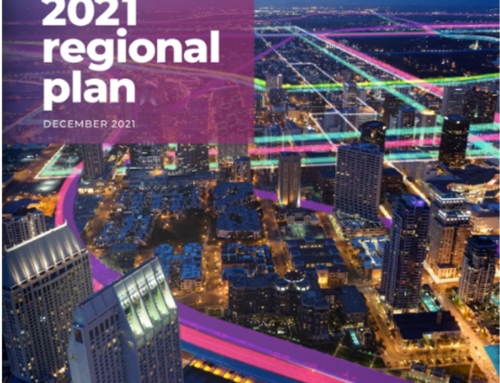In March, STAY COOL for Grandkids, along with several other regional and statewide advocacy groups, testified before the California Air Resources Board (CARB) in support of ambitious 2035 Greenhouse Gas (GHG) reduction targets for the San Diego region (click here to read our letter).
While the Board ultimately approved lower targets, we were encouraged by the strong support from our regional stakeholders for higher targets, as well as by the commitment from SANDAG staff and CARB staff to consider various ways for achieving greater reductions. Now that SANDAG has begun the 2019 update to its long-range Regional Transportation Plan / Sustainable Communities Strategy (RTP / SCS), we plan to meet with senior staff from SANDAG and other public agencies in the coming weeks to discuss our ideas with them. We also plan to work with other stakeholder groups and organizations to exchange ideas on how the 2019 Plan update can achieve ambitious GHG reduction targets while meeting other important environmental, social and economic goals.
STAY COOL believes that SANDAG’s 2019 Plan can achieve greater GHG reductions by 2035 if the following ideas are incorporated into the Plan and are properly credited toward meeting the region’s 2035 GHG reduction targets:
- Multiple-benefit plans, projects and programs. There are a variety of possible projects and programs that could provide multiple benefits from an environmental, economic and social equity perspective, and would potentially be creditable toward meeting GHG reduction targets for SANDAG and other MPOs. In addition, multiple-benefit projects and programs can often qualify for funding from sources other than the traditional transportation-related sources.
- Multi-jurisdictional plans, projects and programs. This would include not only major multi-modal transportation infrastructure such as “managed lanes” (which can often be financially supported by several different public agencies), but also transportation projects and programs that directly serve major public facilities, such as universities, airports, and port facilities.
- A commitment to expedite the implementation of SB 743 within the San Diego region. Under this law, which was enacted in 2013, local governments and other public agencies will evaluate vehicle travel associated with new development as part of the project’s environmental review, and, if the impact is significant, mitigate those impacts through vehicle travel-reducing measures, which will support achievement of SB 375 goals. The 2019 RTP / SCS should include a firm commitment by SANDAG to ensure proper implementation of this law in the San Diego region.
We encourage all our members to become informed on these issues and ideas, and to speak out during this important regional planning effort. Also, if you have suggestions for how STAY COOL can be an effective voice for strong regional leadership in the fight against global warming, or if you wish to help, please let us know. Our kids and grandkids will thank you!



